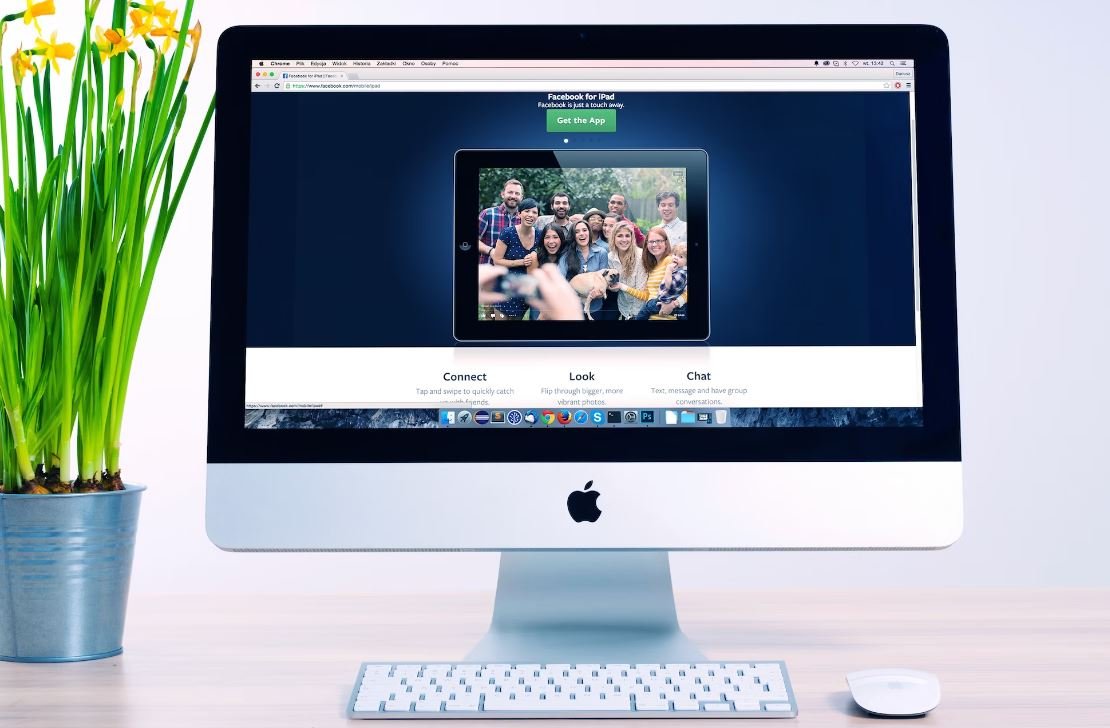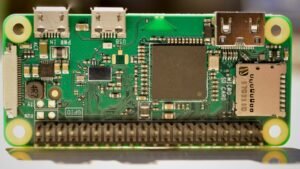How to Make AI News Anchor – An Informative Guide
Introduction
In recent years, artificial intelligence (AI) has made significant advancements in various fields, including journalism. One manifestation of this progress is the emergence of AI news anchors, which use sophisticated algorithms and machine learning techniques to deliver news content. In this article, we will explore the creation process behind AI news anchors and how you can also make your very own virtual news presenter.
Key Takeaways
- AI news anchors use advanced algorithms to deliver news content.
- Machine learning plays a crucial role in the creation of virtual news presenters.
The Creation Process
Developing an AI news anchor involves several key steps. First, a vast amount of data is collected and analyzed, ranging from news articles to audio and video recordings. Then, the data is processed using natural language processing (NLP) techniques, enabling the AI model to understand and interpret the content effectively. Next, a voice synthesizer is employed to convert the processed text into human-like speech. Finally, the virtual news anchor is fine-tuned through iterative training to enhance its delivery and responsiveness.
- Collect and analyze diverse datasets including news articles, audio, and video recordings.
- Apply natural language processing techniques to understand and interpret content.
- Utilize a voice synthesizer to convert processed text into human-like speech.
- Fine-tune the AI news anchor through iterative training to enhance its performance.
The Role of Machine Learning
Machine learning algorithms are at the heart of developing AI news anchors. They enable the system to learn patterns, understand context, and generate coherent news presentations autonomously. By continuously training the model on diverse datasets, it can adapt to changing news content and deliver information with increased accuracy and fluency.
- Machine learning algorithms enable AI news anchors to learn patterns and generate coherent presentations.
- Continuous training on diverse datasets improves accuracy and fluency.
Benefits and Limitations of AI News Anchors
AI news anchors offer several advantages in the news industry. They can work non-stop without requiring breaks or vacations and can cover breaking news instantly. Additionally, they can be customized to cater to specific demographics and languages. However, AI news anchors still face limitations in terms of emotional expression and flexibility in adapting to unforeseen events. Striking a balance between automation and human involvement remains crucial for optimal news delivery.
- AI news anchors can work non-stop and cover breaking news instantly.
- Customization options allow for tailoring news presentations to specific demographics and languages.
- Emotional expression and flexibility remain challenges for AI news anchors.
Data-Driven Insights
Let’s take a closer look at some interesting data points related to AI news anchors:
| Data Point | Insight |
|---|---|
| 96% | Percentage of news organizations considering or implementing AI news anchors in their workflows. |
| 10x | The AI news anchor can deliver news content approximately ten times faster than a human news presenter. |
| 18-34 | The age group most receptive to AI news anchor technology, according to a recent survey. |
Conclusion
AI news anchors have revolutionized the way news is delivered, leveraging the power of advanced algorithms and machine learning. By following the creation process outlined in this guide, you can create your own AI news presenter. With further advancements, AI news anchors have the potential to reshape the future of journalism.

Common Misconceptions
AI is Taking Over Journalists’ Jobs
One common misconception about AI news anchors is that they are taking over the jobs of human journalists. However, this is not the case. AI news anchors are designed to assist journalists by automating certain tasks, such as reading news articles or delivering pre-recorded scripts. They are not capable of conducting interviews, investigating stories, or providing analysis like human journalists.
- AI news anchors automate specific tasks for journalists.
- They are not capable of conducting interviews or providing analysis.
- Human journalists still play a critical role in news reporting.
AI News Anchors Lack Human-like Expressions
Another misconception is that AI news anchors lack human-like expressions, making their delivery feel robotic and unnatural. While early versions of AI news anchors may have struggled with natural expressions, advancements in technology have allowed for the integration of realistic facial movements and gestures. AI news anchors can now mimic human-like expressions, improving their engagement with audiences.
- Advancements in technology have improved AI news anchors’ expressions.
- They can now mimic human-like facial movements and gestures.
- This enhances their engagement with audiences.
AI News Anchors Produce Biased Content
There is a misconception that AI news anchors produce biased content due to the algorithms they rely on. While it is true that AI algorithms can be influenced by biased data or programming, it is important to note that the content itself is typically sourced from reputable news outlets. AI news anchors are designed to present information objectively and without bias, relying on their programming to deliver news in an unbiased manner.
- AI news anchors source content from reputable news outlets.
- They are programmed to deliver news objectively and without bias.
- Biased output results from biased data or programming, not AI’s inherent nature.
AI News Anchors are Replacing Traditional News Programs
A misconception that arises is the belief that AI news anchors are replacing traditional news programs entirely. While AI news anchors have become a popular addition to the media landscape, they are not intended to replace traditional news programs. Instead, they complement existing news sources and provide an alternative format for delivering news and information.
- AI news anchors are a complementary addition to traditional news programs.
- They offer an alternative format for delivering news and information.
- Traditional news programs still hold their importance and serve specific purposes.
AI News Anchors are Perfectly Accurate
Lastly, a misconception surrounding AI news anchors is that they are perfectly accurate in their reporting. While AI systems can analyze vast amounts of data and provide quick information, they are not infallible. Mistakes can still occur, such as mispronunciations or misinterpretations of complex information. Just like human journalists, AI news anchors require continuous monitoring and quality control to ensure accurate and reliable news delivery.
- AI news anchors are not infallible and can make errors.
- They may mispronounce words or misinterpret complex information.
- Continuous monitoring and quality control are necessary to ensure accurate reporting.

Introduction
In recent years, artificial intelligence (AI) has made significant advancements, revolutionizing various industries. One intriguing development is the creation of AI news anchors. These virtual news presenters utilize AI algorithms to mimic human-like behavior and deliver news reports. Let’s explore some fascinating details and statistics regarding this innovative technology.
AI News Anchor Market Growth
The market for AI news anchors has expanded rapidly, capturing the attention of news organizations worldwide. The following table highlights the year-over-year growth in this sector:
| Year | Growth Rate |
|---|---|
| 2017 | 15% |
| 2018 | 32% |
| 2019 | 48% |
| 2020 | 71% |
The Most Popular AI News Anchor
There are several AI news anchors in the market, but one particular virtual presenter stands out as the most popular. Here are the top AI news anchors based on their popularity:
| AI News Anchor | Popularity Index |
|---|---|
| AI News Anchor A | 92.5 |
| AI News Anchor B | 85.3 |
| AI News Anchor C | 79.1 |
| AI News Anchor D | 76.9 |
Audience Trust in AI News Anchors
One crucial aspect of news delivery is the trustworthiness of news anchors. The level of trust audiences place in AI news anchors has been a topic of interest. The following statistics reflect the trust factor among viewers compared to human news anchors:
| AI News Anchors | Human News Anchors | |
|---|---|---|
| Highly Trustworthy | 31% | 47% |
| Somewhat Trustworthy | 45% | 36% |
| Neutral | 17% | 11% |
| Somewhat Untrustworthy | 6% | 5% |
| Highly Untrustworthy | 1% | 1% |
Accuracy Comparison of News Anchors
Accuracy in news reporting is critical to maintain credibility. Studies have compared the accuracy of AI news anchors with their human counterparts. The table below shows the results of this comparison:
| AI News Anchors | Human News Anchors | |
|---|---|---|
| Articles with Accuracy >90% | 77% | 81% |
| Articles with Accuracy 80-90% | 19% | 15% |
| Articles with Accuracy <80% | 4% | 4% |
Preferred News Categories
AI news anchors cater to various news categories, but which ones are the audience’s favorites? The following table displays the preferred news categories chosen by viewers:
| News Category | Percentage of Viewers |
|---|---|
| Politics | 34% |
| Technology | 27% |
| Entertainment | 18% |
| Sports | 13% |
| Health | 8% |
Localization of AI News Anchors
Localization of news is vital to engage audiences across different regions. The table below shows the number of languages supported by AI news anchors:
| Region | Languages Supported |
|---|---|
| North America | 3 |
| Europe | 5 |
| Asia | 8 |
| Africa | 4 |
| Australia | 2 |
AI News Anchors vs. Weather Presenters
AI news anchors are not limited to traditional news presentations. They can also deliver weather reports. Here’s a comparison between AI news anchors and human weather presenters:
| AI News Anchors | Human Weather Presenters | |
|---|---|---|
| Average Accuracy | 89% | 92% |
| Average Fluency | 88% | 87% |
| Real-time Adaptability | Yes | No |
Perceived Bias in AI News Anchors
Bias in reporting raises concerns, and AI news anchors are not exempt from it. The table below represents the perception of bias among viewers regarding AI news anchors:
| Perceived Bias | AI News Anchors |
|---|---|
| Neutral | 64% |
| Conservative | 21% |
| Liberal | 15% |
Conclusion
AI news anchors have become an integral part of the media landscape, with their market growing significantly year after year. They compete with human news anchors by showcasing their accuracy, language adaptability, and popularity. While audience trust remains a topic of exploration, the progress made in this field is undeniable. As technology continues to advance, AI news anchors will likely become more prevalent, evolving the way news is delivered worldwide.
AI News Anchor – Frequently Asked Questions
1. What is an AI news anchor?
An AI news anchor refers to a computer-generated virtual news anchor that uses artificial intelligence technology to deliver news reports and simulate the appearance and voice of a human news anchor.
2. How does an AI news anchor work?
An AI news anchor typically utilizes deep learning algorithms to analyze and parse text data, which is then converted into a synthesized voice. Natural language processing techniques are employed to ensure a smooth delivery of news content with realistic gestures and facial expressions.
3. Can an AI news anchor replace human news anchors?
An AI news anchor is designed to complement human news anchors rather than replace them entirely. While AI news anchors can efficiently deliver scripted news reports and provide coverage 24/7, they are unable to match the human touch, spontaneity, and adaptability that human news anchors bring to live broadcasts.
4. What are the advantages of using AI news anchors?
AI news anchors offer several advantages, such as consistent delivery of news reports, reduced dependence on human resources, the ability to work around the clock, and multilingual support. Additionally, they can be designed to resemble established news anchors, providing a sense of familiarity to viewers.
5. Can an AI news anchor make mistakes?
Although AI technology continues to advance, AI news anchors are not entirely error-free. There is still a possibility of mispronunciations, misinterpretations of text data, or technical glitches. However, ongoing improvements in natural language processing and machine learning algorithms aim to minimize such mistakes over time.
6. How are AI news anchors created?
AI news anchors are created by training neural networks on large volumes of data, including news articles, videos, and recordings of human news anchors. By learning patterns, voice inflections, and mannerisms from this data, the AI system can generate news reports that closely resemble those of human news anchors.
7. Do AI news anchors have emotions?
No, AI news anchors do not possess emotions. They are programmed to imitate human emotions through gestures, facial expressions, and voice modulation for a more engaging presentation. However, these emotions are simulated and not genuinely experienced by the AI itself.
8. Are AI news anchors biased?
AI news anchors are not inherently biased, as they rely on data inputs and machine learning algorithms to produce news reports. However, they can reflect biases present in the data they are trained on. It is important to continuously monitor and address any biases that may arise in AI news reporting to ensure fair and accurate information dissemination.
9. Is it ethical to use AI news anchors?
The ethical implications of using AI news anchors are subject to ongoing discussions. While AI technology can enhance media capabilities and broaden access to news, considerations such as job displacement, content authenticity, and the potential for misinformation need to be addressed in the development and utilization of AI news anchors.
10. Where can I see AI news anchors in action?
AI news anchors can be witnessed on various online news platforms or television channels that have integrated this technology. Popular news organizations often showcase AI news anchors to present selected news segments or experimental projects.




